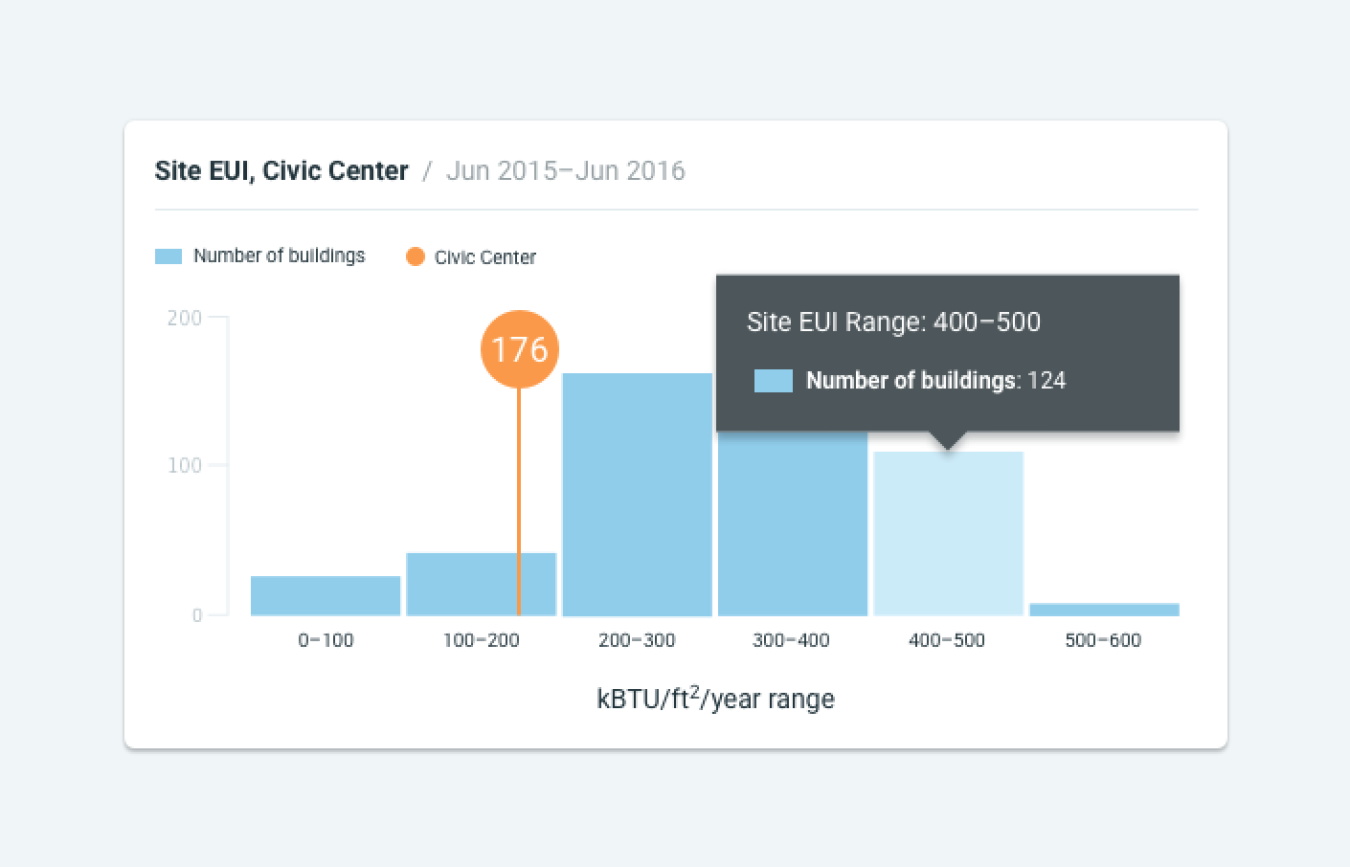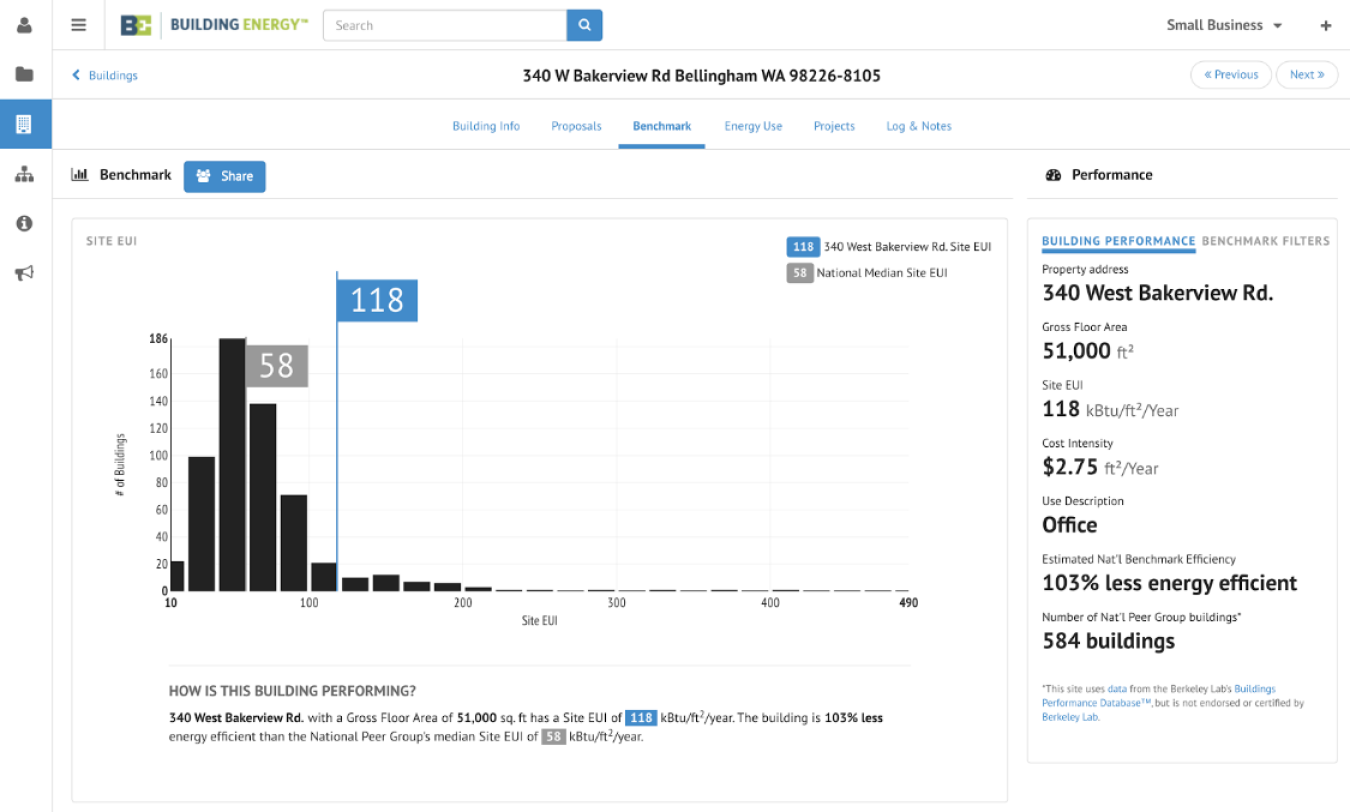The Energy Department’s Building Performance Database (BPD), the nation’s largest dataset of energy-related building characteristics, has expanded to include data from over 950,000 commercial and residential buildings. Through an average of 150 user sessions per week, BPD users are accessing data that has been cleansed and anonymized from across a variety of real estate sectors and regions for use in comparative analyses, as well as tracking of energy trends. Recently added features and capabilities have broadened the tool’s scope, enabling users to filter specific data, download analysis results and benchmarking charts, and insert markers in charts to identify their buildings.
Use the BPD to improve your analyses
Smart meters, energy performance disclosure laws, and emerging technologies generate building and energy performance data. The Building Performance Database opens this data for public use and supports innovation by a range of stakeholders:
- Building owners and managers, and homeowners — See whether your building is a high or low performer compared to similar buildings using a customized peer group.
- Energy efficiency contractors, energy auditors and service providers, and entrepreneurs — Strengthen your existing toolset through additional analyses from a large dataset of measured data from real buildings. For example, use it as part of an energy audit.
- Local, state, and federal governments — Profile the building stock in your jurisdiction and compare buildings with different characteristics.
- Utilities and energy efficiency programs — Characterize the building portfolio and maximize the effectiveness of efficiency programs through improved targeting.
- Investors, lenders, and financial analysts — Quantify the range of actual performance among groups of buildings to improve risk analysis.
Developers — use the BPD API to enhance your applications
Software developers have the opportunity to embed BPD data analytics into software applications by using the BPD’s application programming interface (API). Get a six-month API evaluation license and test out what BPD data can do for you! (The evaluation license will automatically expire at the end of six months.) A new option, a free commercial license, is now available for a one-year renewable term and no costs apply if there are under 2,000 API queries per month. (Users will automatically be billed for any queries over the 2,000 free queries per month, but it is anticipated that this free amount will be more than sufficient for the vast majority of API users.) More details regarding the API can be found here.
Since the launch of BPD, more than 25 API evaluation and commercial licenses have been issued to a variety of users including software companies, university researchers, and energy consultants. For example, Lucid is using the Building Performance Database API to help customers put their energy data into context within their BuildingOS platform, which integrates and aggregates portfolio-wide building and metering systems data for simple, collaborative analysis. Users of the BuildingOS platform will be able to benchmark their buildings against peer groups, and set informed energy goals using comparative data from the BPD.

Lucid's proposed Benchmarking "card" in their BuildingOS application will allow users to compare existing building performance against peer groups in the BPD.

Building Energy's SaaS offering allows users to compare design estimates of energy use to actual energy use from a comparable BPD dataset.
Building Energy is using the BPD API in their software-as-a-service (SaaS) offering to allow architects, building owners, and other service providers to compare design estimates of energy use to actual energy use from a comparable BPD dataset.
The Building Performance Database has become an integral tool for those who wish to leverage real-world building energy dataset analytics to improve performance of their building stock. Visit the Commercial Buildings Integration program’s website to learn more about its ecosystem of analysis tools.
Send us your BPD story!
Tell us how you use the Building Performance Database and enclose an image to potentially be featured in an article. Please send details to: bpd@ee.doe.gov.
